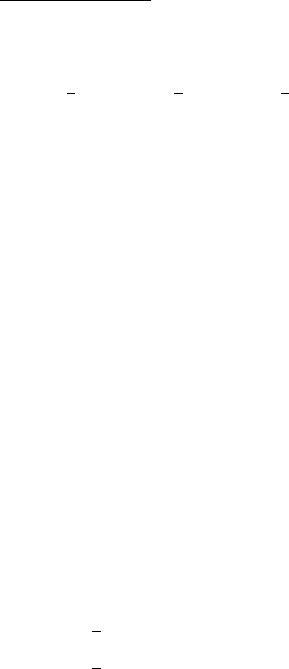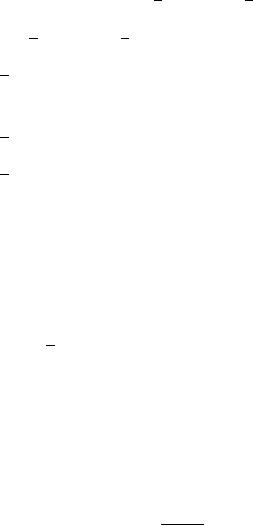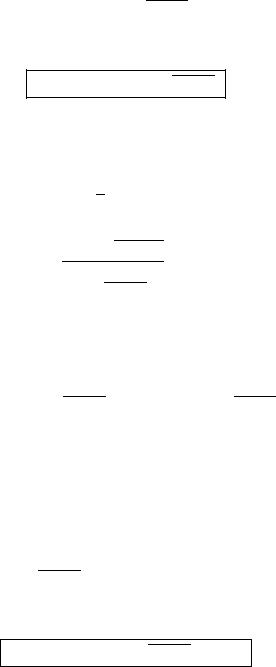
- •Functions
- •The Concept of a Function
- •Trigonometric Functions
- •Inverse Trigonometric Functions
- •Logarithmic, Exponential and Hyperbolic Functions
- •Limits and Continuity
- •Introductory Examples
- •Continuity Examples
- •Linear Function Approximations
- •Limits and Sequences
- •Properties of Continuous Functions
- •The Derivative
- •The Chain Rule
- •Higher Order Derivatives
- •Mathematical Applications
- •Antidifferentiation
- •Linear Second Order Homogeneous Differential Equations
- •Linear Non-Homogeneous Second Order Differential Equations
- •Area Approximation
- •Integration by Substitution
- •Integration by Parts
- •Logarithmic, Exponential and Hyperbolic Functions
- •The Riemann Integral
- •Volumes of Revolution
- •Arc Length and Surface Area
- •Techniques of Integration
- •Integration by formulae
- •Integration by Substitution
- •Integration by Parts
- •Trigonometric Integrals
- •Trigonometric Substitutions
- •Integration by Partial Fractions
- •Fractional Power Substitutions
- •Numerical Integration
- •Integrals over Unbounded Intervals
- •Discontinuities at End Points
- •Improper Integrals
- •Sequences
- •Monotone Sequences
- •Infinite Series
- •Series with Positive Terms
- •Alternating Series
- •Power Series
- •Taylor Polynomials and Series
- •Applications
- •Parabola
- •Ellipse
- •Hyperbola
- •Polar Coordinates
- •Graphs in Polar Coordinates
- •Areas in Polar Coordinates
- •Parametric Equations
26 |
|
|
|
|
|
|
|
|
CHAPTER 1. FUNCTIONS |
||
|
e) |
2 sin2 x + 5 sin x + 2 = 0 |
f) |
cot3 x − 3 cot x = 0 |
|||||||
|
g) |
sin 2x = cos x |
h) |
cos 2x = cos x |
|
||||||
|
i) |
cos2 |
|
x |
= cos x |
j) |
tan x + cot x = 1 |
|
|||
|
|
|
|
||||||||
|
2 |
|
|||||||||
7. |
If arctan t = x, compute sin x, |
cos x, |
tan x, |
cot x, |
sec x and csc x in |
||||||
|
terms of t. |
|
|
|
|
|
|
||||
8. |
If arcsin t = x, compute sin x, cos x, tan x, cot x, sec x and csc x in terms |
||||||||||
|
of t. |
|
|
|
|
|
|
|
|
|
|
9. |
If arcsec t |
= x, compute sin x, |
cos x, |
tan x, |
cot x, |
sec x and csc x in |
|||||
|
terms of t. |
|
|
|
|
|
|
||||
10. |
If arccos t |
= x, compute sin x, |
cos x, |
tan x, |
cot x, |
sec x and csc x in |
|||||
|
terms of t. |
|
|
|
|
|
|
||||
Remark 3 Chebyshev polynomials are used extensively in approximating functions due to their properties that minimize errors. These polynomials are called equal ripple polynomials, since their maxima and minima alternate between 1 and −1.
1.4Logarithmic, Exponential and Hyperbolic Functions
Most logarithmic tables have tables for log10 x, loge x, ex and e−x because of their universal applications to scientific problems. The key relationship between logarithmic functions and exponential functions, using the same base, is that each one is an inverse of the other. For example, for base 10, we have
N = 10x if and only if x = log10 N.
We get two very interesting relations, namely
x = log10(10x) and N = 10(log10 N).

1.4. LOGARITHMIC, EXPONENTIAL AND HYPERBOLIC FUNCTIONS27
For base e, we get
x = loge(ex) and y = e(loge y).
If b > 0 and b 6= 1, then b is an admissible base for a logarithm. For such an admissible base b, we get
x = logb(bx) and y = b(logb y).
The Logarithmic function with base b, b > 0, b 6= 1, satisfies the following important properties:
1.logb(b) = 1, logb(1) = 0, and logb(bx) = x for all real x.
2.logb(xy) = logb x + logb y, x > 0, y > 0.
3.logb(x/y) = logb x − logb y, x > 0, y > 0.
4.logb(xy) = y logb x, x > 0, x 6= 1, for all real y.
5. (logb x)(loga b) = loga xb > 0, a > 0, b 6= 1, a 6= 1. Note that logb x = loga x.
loga b
This last equation (5) allows us to compute logarithms with respect to any base b in terms of logarithms in a given base a.
The corresponding laws of exponents with respect to an admissible base b, b > 0, b 6= 1 are as follows:
1. b0 = 1, b1 = b, and b(logb x) = x for x > 0.
2.bx × by = bx+y
3.bx = bx−y
by
4.(bx)y = b(xy)
Notation: If b = e, then we will express
logb(x) as ln(x) or log(x).
The notation exp(x) = ex can be used when confusion may arise.
The graph of y = log x and y = ex are reflections of each other through the line y = x.

28 |
CHAPTER 1. FUNCTIONS |
graph
In applications of calculus to science and engineering, the following six functions, called hyperbolic functions, are very useful.
1.sinh(x) = 12 (ex − e−x) for all real x, read as hyperbolic sine of x.
2.cosh(x) = 12 (ex + e−x), for all real x, read as hyperbolic cosine of x.
3.tanh(x) = of x.
4.coth(x) =
5.sech (x) = x.
|
sinh(x) |
|
= |
|
ex − e−x |
, for all real x, read as hyperbolic tangent |
||
|
cosh(x) |
ex + e−x |
||||||
|
|
|
|
|||||
cosh(x) |
|
ex + e−x |
|
|||||
|
|
= |
|
, x 6= 0, read as hyperbolic cotangent of x. |
||||
sinh(x) |
ex − e−x |
|||||||
1 |
|
|
|
2 |
|
|
||
cosh x = ex + e−x , for all real x, read as hyperbolic secant of
12
6.csch (x) = sinh(x) = ex − e−x , x 6= 0, read as hyperbolic cosecant of x. The graphs of these functions are sketched as follows:
graph
Example 1.4.1 Eliminate quotients and exponents in the following equation by taking the natural logarithm of both sides.
(x + 1)3(2x − 3)3/4 y = (1 + 7x)1/3(2x + 3)3/2

1.4. LOGARITHMIC, EXPONENTIAL AND HYPERBOLIC FUNCTIONS29
ln(y) = ln |
x + 1)3(2x 3)3/4 |
|
( − |
||
(1 + 7x)1/3(2x + 3)3/2] |
=ln[(x + 1)3(2x − 3)3/4] − ln[(1 + 7x)1/3(2x + 3)3/2]
=ln(x + 1)3 + ln(2x − 3)3/4 − {ln(1 + 7x)1/3 + ln(2x + 3)3/2}
=3 ln(x + 1) + 34 ln(2x − 3) − 13 ln(1 + 7x) − 32 ln(2x + 3)
Example 1.4.2 Solve the following equation for x:
log3(x4) + log3 x3 − 2 log3 x1/2 = 5.
Using logarithm properties, we get
4 log3 x + 3 log3 x − log3 x = 5 6 log3 x = 5
|
log3 x = |
5 |
|
|
|||
|
6 |
|
|
||||
|
|
|
|
|
|||
|
x = (3)5/6. |
|
|||||
Example 1.4.3 Solve the following equation for x: |
|
||||||
|
ex |
1 |
|
||||
|
|
= |
|
|
. |
|
|
|
1 + ex |
3 |
|
||||
On multiplying through, we get |
|
|
|
|
|
||
3ex = 1 + ex or 2ex = 1, ex = |
1 |
||||||
|
|||||||
2 |
|||||||
x = ln(1/2) = − ln(2).
Example 1.4.4 Prove that for all real x, cosh2x − sinh2 x = 1.
cosh2 x − sinh2 x = |
|
2(ex + e−x) |
2 |
− |
|
2 |
(ex − e−x) |
2 |
|
|
|
1 |
|
|
|
|
1 |
|
|
=41[e2x + 2 + e−2x) − (e2x − 2 + e−2x)]
=41[4]
=1

30 |
CHAPTER 1. FUNCTIONS |
Example 1.4.5 Prove that
(a)sinh(x + y) = sinh x cosh y + cosh x sinh y.
(b)sinh 2x = 2 sinh x cosh y.
Equation (b) follows from equation (a) by letting x = y. So, we work with equation (a).
(a)sinh x cosh y + cosh x sinh y = 12(ex − e−x) · 21(ey + e−y)
+21(ex + e−x) · 21(ey − e−y)
=41[(ex+y + ex−y − e−x+y − e−x−y)
+(ex+y − ex−y + e−x+y − e−x−y)]
=41[2(ex+y − e−(x+y)]
=21(e(x+y) − e−(x+y))
=sinh(x + y).
Example 1.4.6 Find the inverses of the following functions:
(a) sinh x (b) cosh x (c) tanh x
(a) Let y = sinh x = 21(ex − e−x). Then
|
|
1 |
|
|
|||
2exy = 2ex |
|
|
(ex − e−x) = e2x − 1 |
||||
2 |
|||||||
e2x − 2yex − 1 = 0 |
|
||||||
(ex)2 − (2y)ex − 1 = 0 |
|
||||||
|
|
|
|
|
|||
ex = 2y ± p24y2 + 4 |
|
||||||
= y ± |
y2 |
+ 1 |
|||||
|
|
|
|
|
p |
|
|
|
|
|
|
|
|
|
|
p
Since ex > 0 for all x, ex = y + 1 + y2.

1.4. LOGARITHMIC, EXPONENTIAL AND HYPERBOLIC FUNCTIONS31
On taking natural logarithms of both sides, we get
p
x = ln(y + 1 + y2).
The inverse function of sinh x, denoted arcsinh x, is defined by
√
arcsinh x = ln(x + 1 + x2)
(b) As in part (a), we let y = cosh x and
2exy = 2ex · 12(ex + e−x) = e2x + 1 e2x − (2y)ex + 1 = 0
p
ex = 2y ± 4y2 − 4 2
p
ex = y ± y2 − 1.
We observe that cosh x is an even function and hence it is not one-to- one. Since cosh(−x) = cosh(x), we will solve for the larger x. On taking natural logarithms of both sides, we get
p p
x1 = ln(y + y2 − 1) or x2 = ln(y − y2 − 1).
We observe that
|
|
|
|
|
|
|
|
|
|
|
|
" |
|
|
|
|
|
|
|
|
# |
|
|
|
|
|
|
|
|
|
|
|
|
|
|
|
|
|
|
|
|
|
|||
2 |
|
|
|
− |
|
|
|
− |
|
|
|
|
|
|
|
|
||||||
|
|
|
|
|
|
|
|
p |
|
|
|
|
||||||||||
|
|
1 |
|
|
|
|
y + y2 |
1 |
|
|
||||||||||||
|
|
|
|
p |
|
|
1) = ln |
|
y2 |
p |
−p |
y2 − 1) |
||||||||||
x = ln(y |
y2 |
|
|
(y − |
− 1)(y + |
|||||||||||||||||
|
= ln |
|
|
|
|
|
|
! |
|
|
|
|
|
|
|
|
|
|
|
|||
|
|
|
|
|
|
|
|
|
|
|
|
|
|
|
|
|
|
|||||
|
|
y + |
|
y2 |
1 |
|
|
|
|
|
|
|
|
|
|
|
||||||
|
= |
|
ln(y +p |
− |
|
x1. |
|
|
|
|
|
|
|
|
|
|||||||
|
|
y2 1) = |
|
|
|
|
|
|
|
|
|
|
||||||||||
|
|
− |
|
p |
|
|
− |
|
− |
|
|
|
|
|
|
|
|
|
|
|||
Thus, we can define, as the principal branch,
√
arccosh x = ln(x + x2 − 1), x ≥ 1

32 |
|
|
|
|
|
|
CHAPTER 1. FUNCTIONS |
|||||
(c) We begin with y = tanh x and clear denominators to get |
||||||||||||
y = |
ex − e−x |
|
, |
| |
y |
| |
< 1 |
|||||
ex + e−x |
||||||||||||
|
|
|
|
|||||||||
ex[(ex + e−x)y] = ex[(ex − e−x)] |
, |y| < 1 |
|||||||||||
(e2x + 1)y = e2x − 1 |
|
, |y| < 1 |
||||||||||
e2x(y − 1) = −(1 + y) |
|
, |y| < 1 |
||||||||||
e2x = − |
(1 + y) |
|
, |y| < 1 |
|||||||||
y − 1 |
|
1 + y |
||||||||||
e2x = |
|
|
|
|
, |
|
|
|y| < 1 |
||||
|
|
|
|
|
|
|
||||||
|
|
|
|
1 − y |
|
|
||||||
2x = ln |
1 − y |
, |y| < 1 |
||||||||||
|
|
|
|
1 + y |
|
|
|
|
|
|||
x = 2 ln 1 − y |
, |y| < 1. |
|||||||||||
1 |
|
|
|
1 + y |
|
|
|
|
||||
Therefore, the inverse of the function tanh x, denoted arctanhx, is defined by
arctanh , x = 2 |
ln |
|
1 |
− x |
, |x| < 1. |
||
1 |
|
|
1 |
+ x |
|
||
|
|
|
|
|
|
|
|
Exercises 1.4
1. Evaluate each of the following
(a) log10(0.001) |
(b) log2(1/64) |
(c) ln(e0.001) |
||||
|
|
(100)1/3(0.01)2 |
|
0.1 |
|
|
|
|
2 |
|
|||
(d) log10 |
|
|
(e) eln(e− |
) |
||
(.0001)2/3 |
|
|||||
2.Prove each of the following identities
(a)sinh(x − y) = sinh x cosh y − cosh x sinh y
(b)cosh(x + y) = cosh x cosh y + sinh x sinh y

1.4.LOGARITHMIC, EXPONENTIAL AND HYPERBOLIC FUNCTIONS33
(c)cosh(x − y) = cosh x cosh y − sinh x sinh y
(d)cosh 2x = cosh2 x + sinh2 x = 2 cosh2 x − 1 = 1 + 2 sinh2 x
3.Simplify the radical expression by using the given substitution.
(a) √ |
|
|
(b) √ |
|
, x = a cosh t |
a2 + x2 |
, x = a sinh t |
x2 − a2 |
√
(c)a2 − x2, x = a tanh t
4.Find the inverses of the following functions:
(a) coth x |
(b) sech x |
(c) csch x |
5.If cosh x = 32, find sinh x and tanh x.
6.Prove that sinh(3t) = 3 sinh t + 4 sinh3 t (Hint: Expand sinh(2t + t).)
7.Sketch the graph of each of the following functions.
a) y = 10x |
b) y = 2x |
c) y = 10−x |
||
e) y = ex |
f) y = e−x2 |
g) y = xe−x2 |
||
j) |
y = sinh x |
k) |
y = cosh x |
l) y = tanh x |
n) |
y = sech x |
o) |
y = csch x |
|
8. Sketch the graph of each of the following functions.
a) y = log10 x b) y = log2 x c) y = ln x
d) y = 2−x
i)y = e−x
m)y = coth x
d)y = log3 x
e) y = arcsinh x f) y = arccosh x g) y = arctanh x
9. Compute the given logarithms in terms log10 2 and log10 3.
34 |
|
|
|
|
|
|
|
|
CHAPTER 1. |
FUNCTIONS |
||||
|
|
|
|
|
27 |
|
|
|
|
20 |
|
|||
a) |
log10 36 |
b) |
log10 |
|
|
|
|
c) |
log10 |
|
|
|
|
|
16 |
9 |
|
||||||||||||
|
|
|
|
|
30 |
|
|
|
|
610 |
|
|||
d) |
log10(600) |
e) |
log10 |
|
|
f) |
log10 |
|
|
|
||||
16 |
(20)5 |
|||||||||||||
10. Solve each of the following equations for the independent variable.
a) |
ln x − ln(x + 1) = ln(4) |
b) |
2 log10(x − 3) = log10(x + 5) + log10 4 |
c) |
log10 t2 = (log10 t)2 |
d) e2x − 4ex + 3 = 0 |
|
e) |
ex + 6e−x = 5 |
f) |
2 sinh x + cosh x = 4 |
